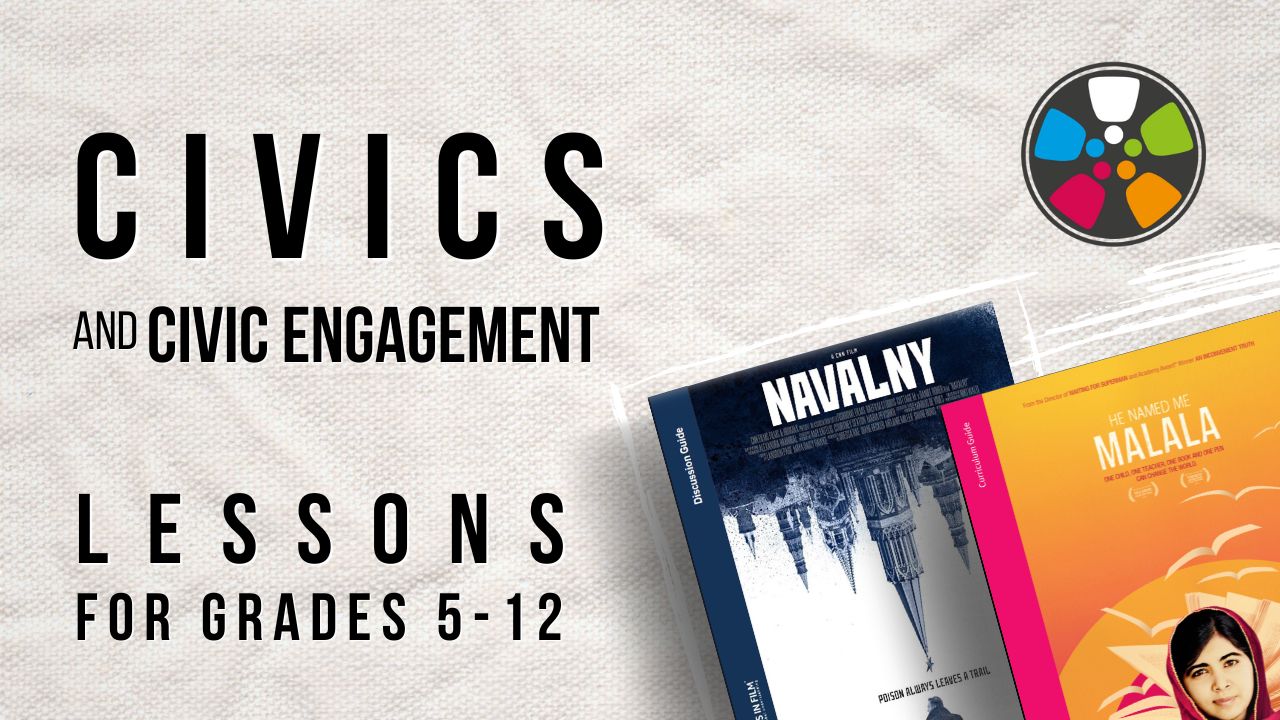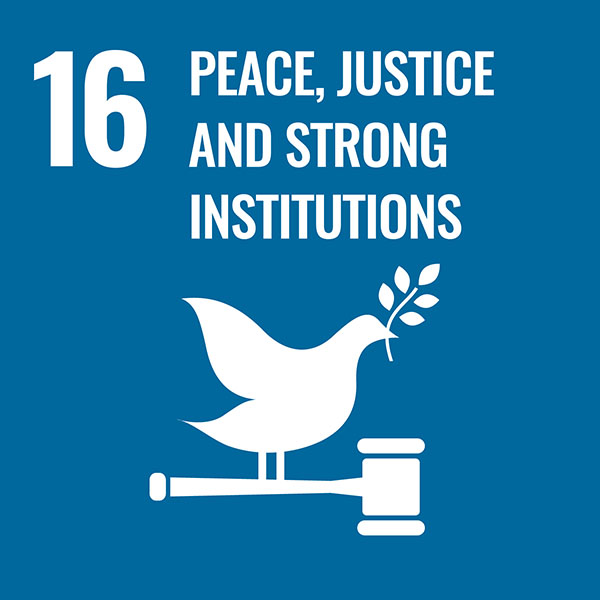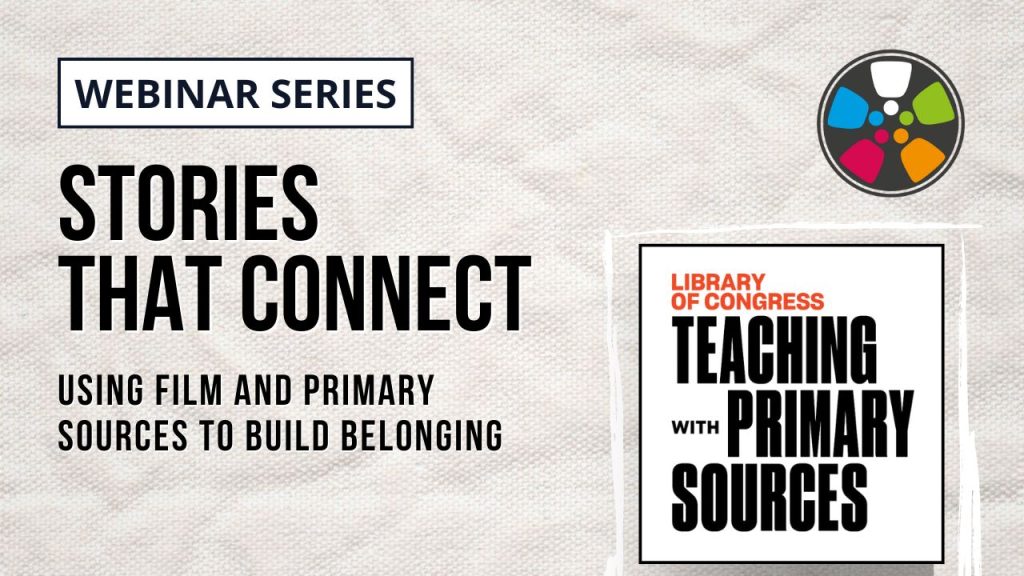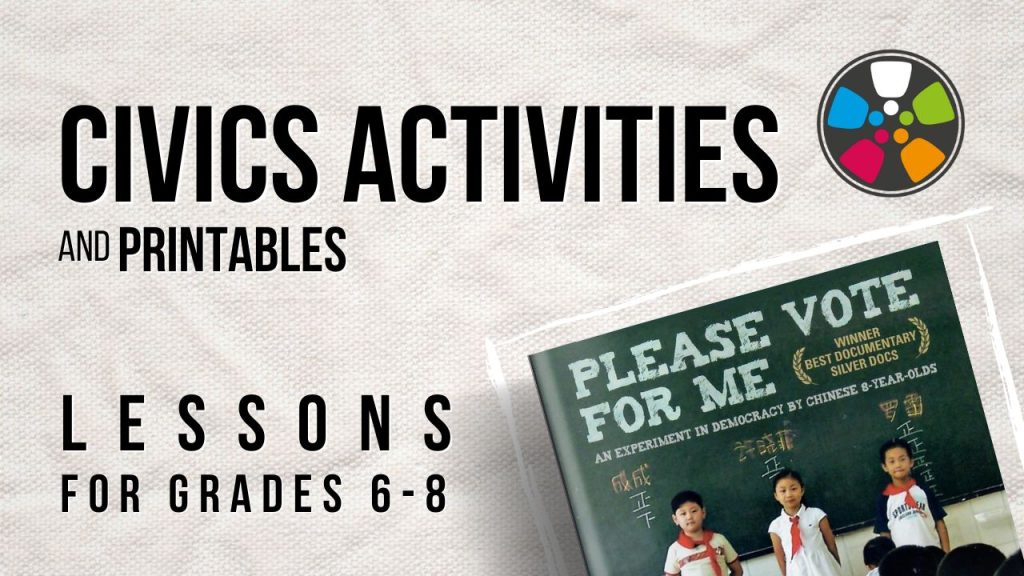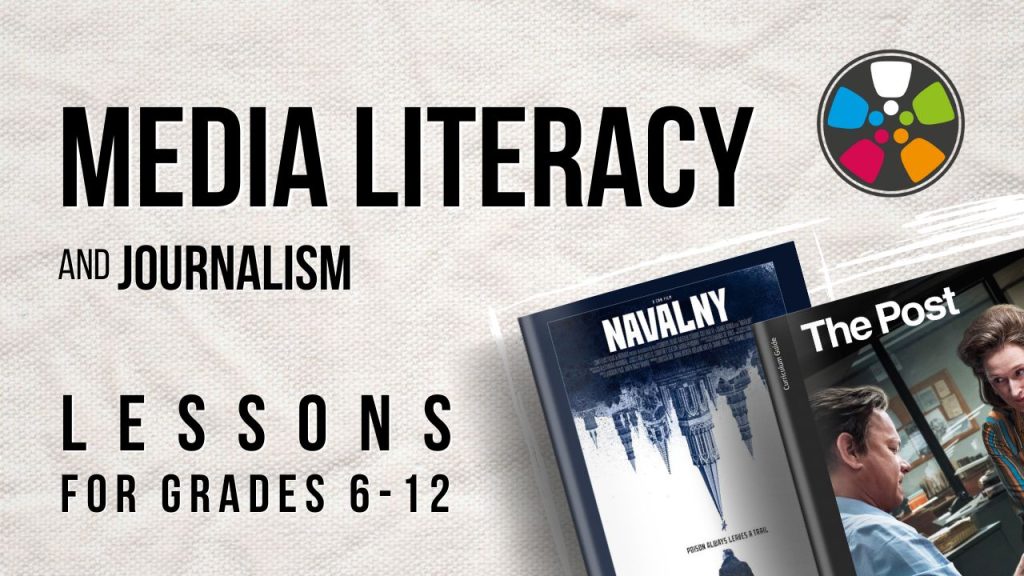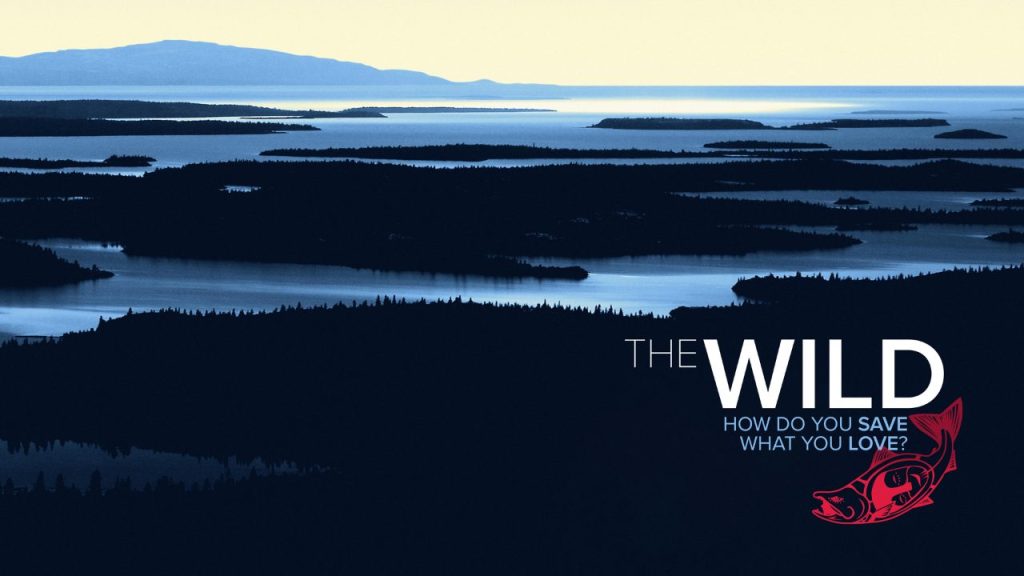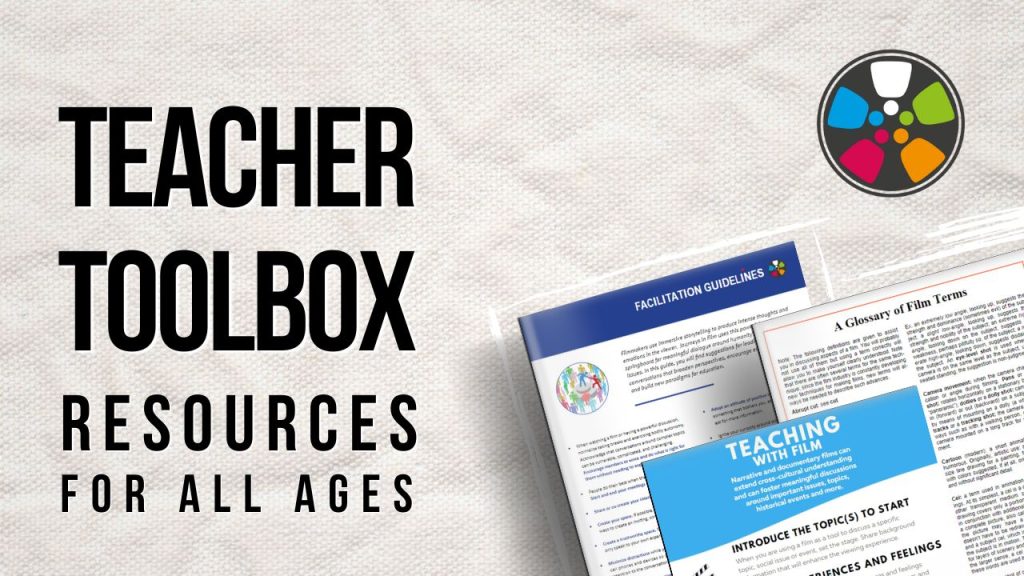Overview
These Civics and Civic Engagement Lessons are great for civics, government, political science and social studies classes. They’re also great tools individual learners and community education. Additional resources for teaching with these films are available from the Journeys in Film Resource Library.
New Resources added October 2025! To get notifications about updates to this collection and other new resources, sign up for our newsletter.
Teaching Tip
Use these lessons to bring civics to life in your classroom for important dates like Voter Registration Day (September 16), National Civics Day (October 27), Civic Learning Week (March), Volunteer Month and Volunteer Week (April), and your local election season as well as all year round.
Lessons
And So It Begins
From acclaimed Filipino-American Director Ramona Diaz comes And So It Begins, a powerful documentary set amidst the traditional pomp and circumstance of Filipino elections in which a quirky people’s movement rises to defend the nation against deepening threats to truth and democracy. In a collective act of joy as a form of resistance, hope flickers against the backdrop of increasing autocracy.
This learning guide features a section on Political Corruption & Civic Engagement explores the critical importance of an informed and educated population and a free press for a thriving democracy.
The extension activities focus on the roles of young people, journalists, and tech companies, and examines online harassment.
For grades 8-12 plus higher education.
Crip Camp
Crip Camp: A Disability Revolution shares with insight, humor, and joy the experiences of a group of disabled teenagers and their journey to adulthood and activism.
The Strategic Use of Power lesson explores what it means to use power strategically in the context of disability rights. It includes printable handouts. It can work with a 12-minute section of the film or the full film. This lesson connects with Crip Camp Lesson 2 about Power and Disability Justice; educators who wish teach both lessons together can find Lesson 2 in the full Crip Camp Curriculum Guide.
For grades 7-12 plus higher education.
Dark Money
Dark Money is a political thriller that examines one of the greatest present threats to American democracy: the influence of untraceable corporate money on our elections and elected officials. The film takes viewers to Montana — a frontline in the fight to preserve fair elections nationwide — to follow an intrepid local journalist working to expose the real-life impacts of the US Supreme Court’s Citizens United decision. Through this gripping story, Dark Money uncovers the shocking and vital truth of how American elections are bought and sold.
This discussion guide explores the corrupting influence of dark money through a non-partisan lens, with a focus on bipartisan issues like land use and land conservation. It provides discussion questions and additional resources around the two main themes of the film: the mechanisms and impact of dark money, and the counterbalancing power of young voters. It also includes a glossary of useful terms. We recommend combining this resource with our Group Discussion Facilitation Guidelines, available below.
The Dark Money Discussion Guide is available as a downloadable PDF or an online Google Slideshow to facilitate discussions.
Gabby Giffords Won’t Back Down
Gabby Giffords Won’t Back Down tells the extraordinary story of former Arizona Congresswoman Gabby Giffords: her relentless fight to recover following an assassination attempt in 2011, and her new life as one of the most effective activists in the battle against gun violence. Featuring extensive verité filming of Gabby and her husband, astronaut-turned-senator Mark Kelly; interviews with Barack Obama and other friends and colleagues; and exclusive access to stunning videos taken in the weeks following her near-death, this film is the story of a rising star transformed by gun violence, and a close-up portrait of the marriage that sustains her.
The Civic Engagement section of the learning guide explores the driving question: How can civics and public service inform one’s sense of belonging in a community?
This lesson features a glossary of useful terms, personal reflection questions (these can be used for journaling or short essays), discussion questions and extension activities, including resources for writing a letter to the editor.
A timeline of Gabby Giffords life is also available to download.
All of these resources are available in English and Spanish.
Download Civics Lesson Download Civics Lesson in Spanish
Preview Civics Lesson Preview Civics Lesson in Spanish
Download Timeline Download Timeline in Spanish
Preview Timeline Preview Timeline in Spanish
He Named Me Malala
He Named Me Malala tells the inspiring true story of Malala Yousafzai. When she began detailing her experiences in the Swat Valley of Pakistan as am 11-year-old blogger for the BBC, she had no idea what momentous changes were coming in her life.
Her father Ziauddin, a school founder and dedicated teacher, was outspoken in his belief that girls, including his beloved daughter, had a right to an education. As they continued to speak out against restrictions imposed by extremists, Ziauddin received constant death threats, so many that he began to sleep in different places. But it was Malala who was almost killed, shot in the head by a gunman on her way home from school. Her survival and recovery have been little short of miraculous.
The Working for Change lesson explores the agency of changemakers, in the context of promoting women’s education around the world.
This lesson features a student research project about organizations around the world working on improving access to education for girls and women. It promotes critical thinking and equips students to critically evaluate organizations working for change.
This resource includes a printable handout students can use to organize their research, extension activities, and an assessment rubric for the research project.
Majority Rules
Majority Rules asks: What if changing the way we vote could change everything?
With America’s democratic experiment mired in division and dysfunction, the state of Alaska votes to revolutionize their election system. The surprising results spark new alliances, a growing call for election reform, and fierce pushback from political parties. Could changing how Americans vote also change politics for the better?
We offer four different Majority Rules Educational Resources to serve different needs.
- Learning Guide*, for grades 8-12.
- Discussion Guide**, for higher ed plus International Baccalaureate (IB) or Advanced Placement (AP) government classes.
- Candidate Memo Assignment and Grading Rubric
- Essay Question and Grading Rubric
*The Learning Guide is also available as a Google Slideshow.
**The Discussion Guide is a great resource for adult education, campus screenings, and community learning environments.Grants of up to up to $2,500 are available to support local screenings. Learn more about Majority Rules Community Screening Grants on the Majority Rules film page in the Journeys in Film Resource Library.
Download Majority Rules Learning Guide Download Majority Rules Discussion Guide
Preview Majority Rules Learning Guide Preview Majority Rules Discussion Guide
Download Candidate Memo Assignment Download Essay Question
Preview Candidate Memo Assignment Preview Essay Question
Navalny
Enthralling and intimate, director Daniel Roher’s NAVALNY unfolds with the pace of a thriller as it follows Russian opposition leader Alexei Navalny in his quest to identify the men who poisoned him in August 2020. Shot in Germany as the story unfolded and offering extraordinary access to the investigation, NAVALNY is a fly-on-the-wall documentary that is also a study of Navalny the man—a portrait of a leader intent on reform who will not be cowed by anything, including his own poisoning.
Alexei Navalny died as a political prisoner in a Siberian penal colony on February 16, 2024.
Civic Engagement: Political Corruption, Nationalism, and Leadership explores the driving questions: What are the civic engagement responsibilities of global citizens? What are the most effective methods to amplify voices and increase visibility?
Power: What is Power? Who has Power? explores the driving questions: What does it mean to have power? Who and what regulates who has power and who doesn’t? How does the distribution of power impact individuals and societies?
These resources include useful terms, personal reflection questions (these can be used for journaling or short essays), discussion questions and extension activities.
A biographical page about Alexei Navalny is also available to download.
Download Civics Lesson Download What is Power Download Biography
Preview Civics Lesson Preview What is Power Preview Biography
Resisterhood
Resisterhood is an award-winning, feature-length documentary that follows six diverse Americans as they fight for social justice on the streets and in the halls of power. Over the course of two years, we watch these inspiring everyday people work to protect our rights and inspire others to join this peaceful and historic movement.
Resisterhood features profiles of two female first-time political candidates: Egyptian immigrant an Muslim-American Mimi Hassanein and second-generation politician and Latino-American Jessica Gutierrez.
There is also a section on effective advocacy, and an activity with a printable worksheet about creating a Personal Civic Action Plan.
The Crisis Scientists
The Crisis Scientists follows seven extraordinary people working to galvanize policy makers and the public to save the planet. This compelling short film explores their preoccupations and emotions at this crucial time for life on Earth. They are inspiring examples of how we all can take action within our spheres of influence.
This Mini Discussion Guide contains questions, activities and resources for exploring the themes of this short film about seven extraordinary people working to galvanize policy makers and the public to act to save the environment.
The Neighborhood Storyteller
The Neighborhood Storyteller follows Asmaa Rashed, a young Syrian woman in a refugee camp in Jordan who embarks on a read-aloud project to empower girls and foster collective healing. Despite her complex living situation as a refugee and the community’s conservative mindset, Asmaa Rashed is determined to raise a new generation of successful women. This documentary feature film explores human resilience, the transition from child to adult and one’s capacity to turn hardships into an opportunity for self-growth.
The Grassroots Work, Life Skills, and Future Vision section introduces students to grassroots initiatives and invites them to become changemakers in their communities.
Youth v Gov
YOUTH v GOV is the story of America’s youth taking on the world’s most powerful government. Armed with a wealth of evidence, twenty-one courageous leaders file a ground-breaking lawsuit against the U.S. government, asserting it has willfully acted over six decades to create the climate crisis, thus endangering their constitutional rights to life, liberty, and property. If these young people are successful, they will not only make history, they will change the future.
Youth v Gov Discussion Guide: The What Can You Do? Community Action and Engagement section explores community service in the context of climate justice, and asks students to consider what actions they find inspirational and what they find effective.
The Youth v Gov Civics Lesson explores U.S. court procedures.
Download Discussion Guide Download Civics Lesson
Preview Discussion Guide Preview Civics Lesson
Group Discussion Facilitation Guidelines
These tips can help you create safe space for classroom engagement on the themes and subjects of these films.
Sustainable Development Goals
Journeys in Film supports the United Nations Sustainable Development Goals. Learn more about teaching with UN SDGs. This curriculum guide connects to the following SDGs.Join Our Community
Receive the latest updates on new educational resources, upcoming films, and exclusive insights into how film can transform teaching and learning.
No spam. Just free teaching resources. We do not share or sell your data. View Privacy Policy

